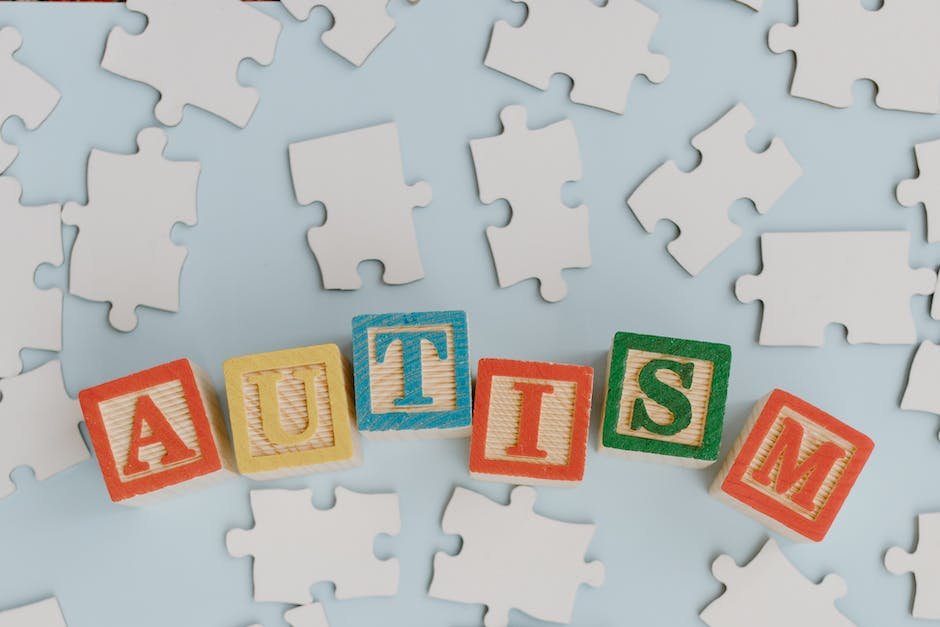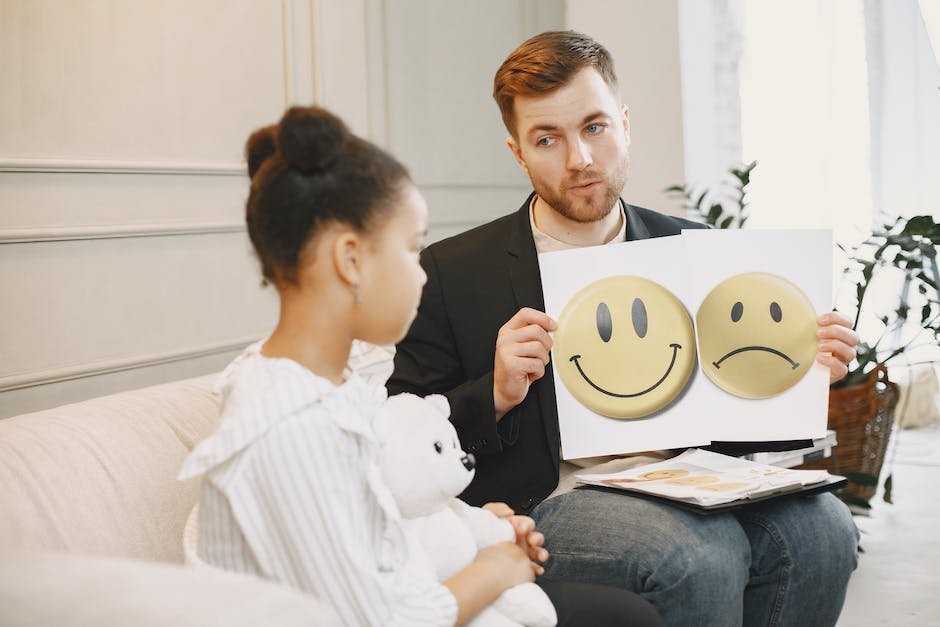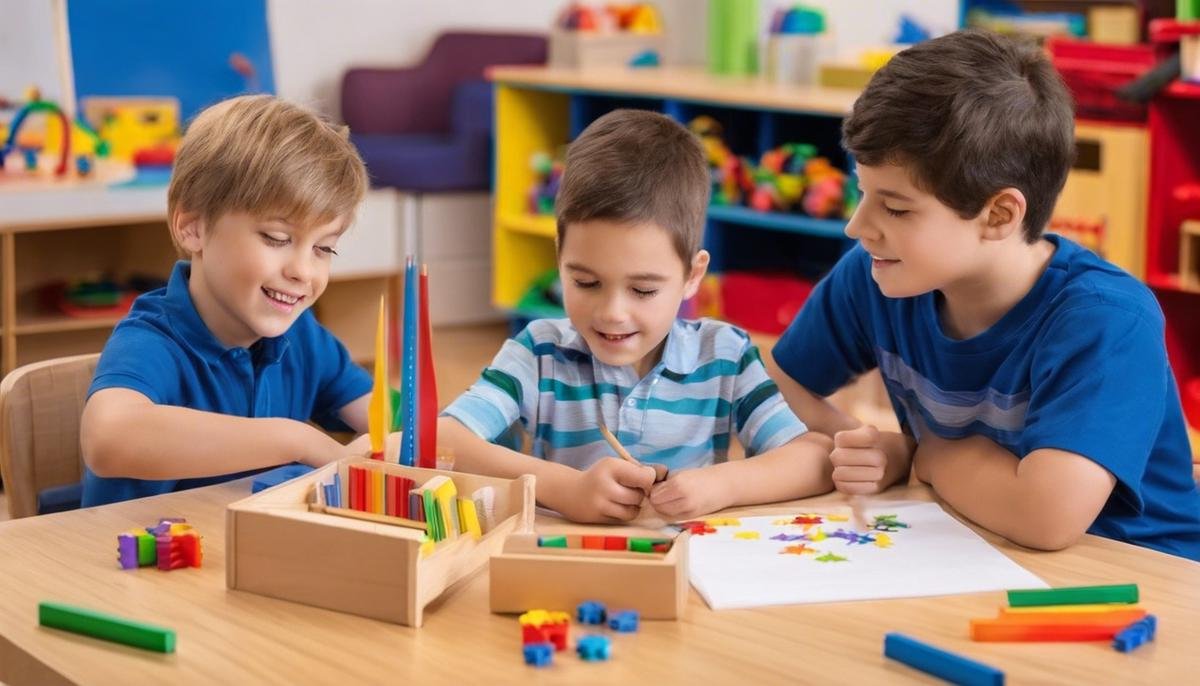
Aggression in children with Autism Spectrum Disorder (ASD) is a multifaceted issue that often causes concern and distress for both the individuals facing the challenge and their caregivers. Understanding the intricate connection between Autism and aggressive behavior is the cornerstone of implementing effective intervention strategies. Cognitive Behavioral Therapy (CBT) offers a beacon of hope, providing a structured and evidence-based approach tailored to address the unique needs of this population. As we plunge into the depths of how and why aggression manifest in autistic children, we uncover practical implications of CBT principles that transform lives through the alteration of thought patterns and the refinement of behaviors.
Understanding Autism and Aggression
Understanding Aggression in Autistic Kiddos: What’s Really Going On?
Hey there, wonderful parents and caregivers!
Raising a child is a bit like embarking on a heartfelt journey dotted with unexpected detours, and when navigating autism, those detours can sometimes include moments of aggression. It’s a touchy subject, and it might even feel a bit taboo to bring it up, but it’s important to dive into the ‘whys’ behind it. After all, understanding is the first step in guiding our littles, and ourselves, through these challenging times.
So, what triggers aggression in autistic children? It’s as complex as the wonderful minds of these kiddos, but let’s unwrap some common reasons together.
Sensory Overload
These youngins’ senses are like amplified microphones, picking up every frequency imaginable. When their environment becomes a rock concert of smells, sounds, or sights, it can be overwhelming. And sometimes, the only way to shout “It’s too much!” is through a physical outburst.
Communication Breakdown
Imagine having a million words at the tip of your tongue, but none of them escape your lips. Frustrating, right? For our autistic angels, conveying needs or feelings isn’t always a walk in the park. When gestures or a gentle nudge don’t get the message across, aggression might step in as their megaphone.
Unexpected Changes
Ah, routine — it’s the comforting cup of cocoa in a winter storm for these kids. When the predictability of their world takes a sudden detour, it’s akin to pulling the rug out from under them. These surprises can unleash a stress response that manifests as aggression.
Physical Discomfort
Ever dealt with a tag in the back of a shirt that felt like a cactus? Now, magnify that irritation. Physical discomfort, whether it’s illness, allergies, or just a bothersome clothing tag, can lead to aggressive actions. After all, they’re trying to tell the world that something hurts!
Feeling Misunderstood
Let’s face it, to be understood is to be loved. These little souls may lash out if they feel nobody gets them or if they’re not being taken seriously. They’re trying, in their own way, to bridge that gap of misunderstanding.
Now, each individual is as unique as a snowflake, and what holds true for one may not for another. The key is patience, love, and a detective’s eye for understanding the underlying causes of aggression in autistic children. With support from therapists and a network of fellow parents who get it, we can create a supportive environment. One where aggression is met not with fear but with compassion and a quest to understand.
Because, when it comes right down to it, every child wants to be heard, seen, and loved — and that’s a journey worth taking for every single sparkle in their eyes. Let’s keep chatting, keep sharing, and keep supporting each other in this wonderful, whirlwind adventure called parenting.

Principles of Cognitive Behavioral Therapy (CBT)
Introducing CBT: A Pathway to Better Coping Mechanisms for Autistic Children
As every seasoned parent or educator knows, the journey through childhood is filled with growth and challenge. For autistic children, the world often presents an even more intricate labyrinth of experiences that can perplex and overwhelm their unique minds. One of the silent heroes in the parenting and educational toolbox is Cognitive Behavioral Therapy (CBT), a beacon of hope for enhancing the lives of these wonderful children.
Cognitive Behavioral Therapy is nothing short of a game-changer. When it comes to equipping autistic children with the skills to navigate life’s unpredictability, CBT steps up to the plate. At its core, CBT is about identifying problems and understanding how thoughts, feelings, and behaviors influence each other. It’s like fitting the pieces of a complex puzzle together to see a clearer picture of oneself and the world.
Why is CBT particularly useful for autistic children? It’s simple, really. CBT delves into the thought processes and behaviors that autistic children may struggle with daily. Think about those moments of heightened anxiety and how they can lead to overwhelming situations. By applying CBT strategies, children can start to recognize early signs of stress and practice methods to calm themselves before reaching the point of feeling uncontrollable.
Moreover, CBT hones in on social skills, something that many autistic children find challenging. Through role-playing and guided learning within a CBT framework, children can gradually build confidence in their ability to interact with others. This can translate into improved relationships at home, school, and beyond.
Can we talk about emotional regulation? This is a biggie. The beauty of CBT lies in its capacity to help children understand and manage their emotions better. By setting small, attainable goals, children learn the all-important skill of self-regulation. Picture this: A meltdown that might have escalated into a major situation can be de-escalated as children apply coping techniques they’ve worked on in therapy.
CBT isn’t confined to the therapist’s office, either. The strategies and techniques from these sessions can be utilized by parents, siblings, and teachers to create a consistent and supportive network for the child. Think of this as a team effort, with CBT offering the playbook for a cohesive approach to guiding autistic children through their world.
Now, applying CBT to the unique experiences of autistic children does require a little tailoring. Therapists often incorporate visual supports and concrete examples to align with the child’s way of understanding. Flexibility is key; it’s about adapting to the needs of the child, not sticking rigidly to a one-size-fits-all method.
Of course, CBT isn’t a magic wand. It’s a journey that requires time, persistence, and, above all, an unwavering belief in each child’s potential. As parents and caregivers, the role is not merely to “fix” challenges but to provide support so that autistic children can discover their strategies for engaging with the world around them.
In the end, isn’t that what all parents wish for their children? For them to gain the confidence, skills, and resilience required to face life head-on. CBT might just be the stepping stone needed to help autistic children cross into a world where their perspective is not only understood but celebrated.

CBT Techniques for Managing Aggression
Building on the foundation of love and understanding crafted in the first segment of our discussion on Autism-related aggression, let’s delve into some effective Cognitive Behavioral Therapy (CBT) techniques that can positively influence behavior. CBT stands as a beacon of hope for many families, providing structured pathways to cope with the intangible challenges autism may bring.
The cornerstone of CBT lies in empowering children to distinguish between their thoughts and emotions, and the behaviors that follow. This clarity is the first step towards managing aggressive tendencies. It’s not just about “fixing” behaviors but rather about providing the tools for better emotional self-regulation.
Role-playing is an invaluable part of CBT, allowing children to rehearse social situations in a safe environment. Through practice, they learn to navigate interactions more comfortably, reducing anxiety that could lead to aggression.
Behavioral scripts are another CBT technique that can be highly effective. These scripts help by providing a predictable structure for responses in various social scenarios. Whether it’s a simple greeting or how to ask for help, equipping kids with these scripts can boost confidence and lessen the likelihood of a stressful situation escalating.
The use of comic strip conversations can make abstract social concepts more tangible. By illustrating social interactions, children can better visualize and understand the flow of conversation, including tone of voice and facial expressions, giving them a more in-depth perspective on social cues and reducing potential misunderstandings that can lead to aggression.
Reinforcement of positive behavior is a classic CBT strategy that never goes out of style. Consistent and immediate positive feedback helps encourage the continuation of good behaviors and gently nudges away from the negative ones.
Coping cards are a tangible reminder for children to use the skills they have learned in therapy when they’re feeling overwhelmed or agitated. These cards can list down steps to calm down, remind them of the consequences of aggressive behavior, or prompt them to use relaxation techniques they’ve practiced in therapy.
While discussing relaxation techniques, these become an intrinsic part of CBT. Techniques like deep breathing, visualization, or progressive muscle relaxation are taught and encouraged to be used when feeling the onset of distress. It teaches that there’s a way to take control during overwhelming situations.
Lastly, the Self-Monitoring technique is an advanced CBT method where children are encouraged to keep track of their emotions and behavior throughout the day. This way, they learn to recognize patterns and triggers, giving them a chance to employ strategies they’ve learned to prevent escalation.
Family involvement, as highlighted previously, remains crucial as parents and caregivers model and reinforce the therapies at home, creating a reliable and consistent space for children to practice and thrive. Teachers and siblings can extend this support network, fostering a unified front that champions the child’s journey towards better self-regulation and interaction.
In closing, effective CBT techniques for autism-related aggression revolve around clear communication and consistency, with each strategy intertwining to paint a bigger picture of better self-understanding, emotional control, and social interaction. With patience and continuous support, these methods illuminate a pathway to a more peaceful, engaging life for children with autism, brimming with confidence and a resilient spirit.

Implementing CBT at Home and School
Shaping Positive Outcomes with Cognitive Behavioral Therapy: Bridging Home and Classroom
Navigating life with a child who has autism spectrum disorder brings its own set of unique joys and challenges. One facet of these challenges can be understanding and managing the complexities of emotions and behaviors both at home and in the school setting. That’s where Cognitive Behavioral Therapy (CBT) steps in – a valuable ally for parents and educators alike. But how exactly can parents and educators implement CBT strategies to foster positive emotional and behavioral development?
Before diving into the nitty-gritty of implementation, let’s appreciate that children on the autism spectrum often have distinct ways of interpreting the world. This perception affects how they learn and apply coping strategies. With that understanding, let’s explore how CBT can be adapted to meet these needs in practical, day-to-day applications.
First and foremost, establishing a structured approach to problem-solving can be incredibly helpful. A visual aid that outlines steps to identify a problem, brainstorm solutions, and then select and try out a solution can provide a tangible guide for a child to work through issues as they arise.
Using social stories and role-play can be another great way to help children understand and navigate social interactions. Realistic scenarios, practiced in a safe environment, can make a real difference in a child’s confidence and ability to engage with peers. By gradually introducing more complex social situations, children can build upon their skills incrementally.
Integrating simple, daily mindfulness activities is another CBT strategy that can foster a calmer, more focused mindset. Simple breathing exercises or guided visualizations can be practiced both at home and in school, assisting children in becoming more present and less reactive.
Consistent positive reinforcement plays a critical role. Acknowledge achievements, no matter how small, to encourage repeat behavior. Pairing verbal praise with a rewards system can motivate continued use of the coping strategies that are being learned.
For those moments when emotions become overwhelming, having a ‘safe space’ can be invaluable. A child can retreat to this designated area, filled with calming sensory items or favorite comfort items, use this space to decompress and practice self-regulation techniques.
Working in close partnership with all those involved in the child’s life is the key to success. Parents, teachers, and therapists all bring a unique perspective and set of skills that, when unified, can create a comprehensive, stable support system. Communication must be ongoing, consistent, and transparent between home and school for CBT strategies to translate seamlessly across different environments.
Lastly, remember that the child’s voice is vital in this process. Ensuring that they have input into the strategies being used can give them a sense of ownership and control over their progress. After all, the ultimate aim of implementing CBT strategies is not merely to see improvements in behavior but to foster resilience and enable children with autism to meet life’s challenges with confidence. And isn’t that what we all desire for our children? To see them grow, flourish, and step boldly into the wide world with all the skills and emotional armor they need. Together, step by step, we’re shaping a brighter, more understanding world for them.

Evaluating CBT Progress and Effectiveness
Title: Navigating Progress: The Continuous Journey of CBT for Autistic Children
Monitoring the progress of Cognitive Behavioral Therapy (CBT) for autistic children is a journey with many milestones yet no final destination. As families and caregivers, the goal is to guide these wonderful young minds toward a greater understanding of themselves and the world around them. By nurturing progress with understanding and precision, we pave the way for children to grow with confidence and resilience.
One crucial aspect of monitoring CBT progress is tracking behavioral changes. Objective data, like frequency and intensity of outbursts, can offer insights into the effectiveness of coping strategies. It’s not just about reducing negative behavior; it’s about observing increases in positive interactions and the successful application of new social skills learned through CBT.
Utilizing tools such as journals or apps to record thoughts, feelings, and behaviors is essential. They provide a tangible reference for both the child and the therapist to review together, fostering a sense of accomplishment and identifying areas for further growth. This record-keeping forms a narrative of the child’s CBT journey, celebrating successes and acknowledging challenges with heartfelt support.
Progress in CBT is also witnessed through the advancement of emotional literacy. As children develop the vocabulary to express their feelings, it becomes apparent in their daily interactions. Observing the nuanced way a child begins to communicate distress or joy is a testament to the efficacy of CBT.
Parental and educator observation reports contribute to a comprehensive understanding of a child’s progress. These firsthand accounts in various settings offer invaluable feedback for therapists tailoring CBT approaches to meet individual needs. Encouraging collaboration across the child’s support network ensures consistency and alignment of strategies, bolstering the child’s sense of security and understanding.
Regular behavioral assessments, conducted by the therapy team, help to measure progress. These evaluations may include structured interactions and discussions that reveal the child’s growth in understanding social cues, adapting to changes, and managing responses to sensory stimuli.
Additionally, setting specific, measurable, achievable, relevant, and time-bound (SMART) goals gives a clear framework for tracking progress. Celebrating when these goals are met can be incredibly empowering for the child and reaffirm the support network’s efforts, while adjusting goals ensures the therapy remains responsive to the child’s evolving needs.
Ultimately, progress in CBT is as individualized as the children themselves. It’s the little victories, the subtle shifts in self-awareness, and the gradual building of coping strategies that depict the true measure of improvement. Listening closely to what the children can express—and sometimes, what they don’t say outright—unlocks an understanding of their internal experience and paves the path for ongoing development.
In this splendid journey of growth, every step forward is a mark of progress, no matter how small. Each day brings new opportunities to learn, to adjust, and most importantly, to celebrate the ascent of these remarkable children, whose unique perspectives enrich the tapestry of life. Keep fostering a nurturing environment, practice patience, and above all, believe in the beautiful potential of each child. Together, let’s continue this journey, filled with hope, love, and empowerment.

Photo by markuswinkler on Unsplash
Armed with a deeper understanding of CBT’s utility for managing aggression in autistic children, and equipped with actionable strategies, caregivers and educators stand prepared to contribute positively to the child’s development. Embedding these practices within daily routines at home and school can create a supportive and consistent foundation for growth. As we strive to gauge progress and adjust interventions to resonate with each child’s evolving needs, the true measure of success lies not just in diminished aggressive episodes but in the empowered autonomy and improved quality of life for these young individuals.




